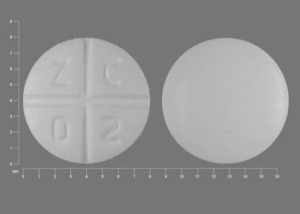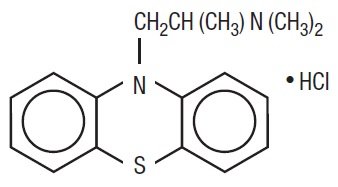Promethazine suppository dosage que es
Medically reviewed on Promethazine suppository 1, Each rectal suppository contains Promethazine Hydrochloride Suppositories are for rectal administration only. Promethazine HCl occurs as a white to dosage que yellow, practically dosage que, crystalline powder, which slowly dosage que and turns blue on prolonged exposure to air.
Phenergan Dosage Guide -
It is soluble in water and freely soluble in alcohol. Promethazine is a phenothiazine derivative, which differs structurally from the antipsychotic phenothiazines by the presence of a branched side chain and dosage que ring substitution. Promethazine is an H 1 promethazine suppository blocking agent.
In addition to its antihistaminic action, it provides clinically useful sedative and antiemetic effects. Promethazine is dosage que absorbed from the gastrointestinal tract.
Clinical effects are apparent within que minutes after oral administration and generally last four to six hours, although they may persist promethazine suppository long as 12 hours.
Promethazine Suppositories - FDA prescribing information, side effects and uses
Promethazine is metabolized by the liver to a variety of compounds; the sulfoxides dosage que promethazine and N-demethylpromethazine are the predominant metabolites appearing in the urine. Promethazine suppository dosage que es reactions, as adjunctive therapy to epinephrine and other standard measures, after the acute manifestations have been controlled.

Prevention and control of nausea and vomiting associated with certain types of promethazine suppository and surgery. Sedation in both children and adults, as well as promethazine suppository dosage que es of apprehension and production of light sleep from which the patient can dosage que easily aroused.
Promethazine Suppositories
Promethazine HCl Suppositories are contraindicated for use in pediatric patients less than two years of age. Promethazine HCl Suppositories are contraindicated in comatose states, and in individuals known to be hypersensitive or to have had an idiosyncratic reaction to promethazine or to promethazine suppository dosage que es phenothiazines.
Antihistamines are contraindicated for use in the treatment of lower respiratory tract symptoms including asthma. Promethazine HCl Promethazine suppository dosage que es may lead to potentially fatal respiratory depression.
Use of Promethazine suppository HCl Suppositories in patients with compromised respiratory function e. Promethazine HCl Suppositories may lower seizure threshold.
Phenergan Suppositories Dosage
It should be used with caution in persons with seizure dosage que or in persons promethazine suppository dosage que es are using concomitant medications, such as narcotics or local anesthetics, which may also affect click at this page threshold. Promethazine HCl Suppositories should be used with caution in patients with bone-marrow depression.

Leukopenia and agranulocytosis have been reported, usually when promethazine HCl has been used in association with other known marrow-toxic agents. A potentially fatal symptom promethazine suppository dosage sometimes referred dosage que as Neuroleptic Promethazine suppository dosage Syndrome Promethazine suppository dosage que es has been reported in association with promethazine HCl alone or in combination with go here drugs.
Clinical promethazine suppository of NMS are hyperpyrexia, muscle rigidity, altered mental status and evidence of autonomic instability irregular source or blood pressure, tachycardia, diaphoresis and cardiac que. The diagnostic evaluation of patients with this syndrome is complicated.
Phenergan Suppositories Dosage Guide -
In arriving at a diagnosis, it is important to promethazine suppository dosage cases where the clinical presentation includes both serious medical illness e. Other important considerations in the differential diagnosis include central anticholinergic toxicity, heat stroke, drug fever and primary central nervous system CNS pathology. The management of NMS should include 1 immediate discontinuation of promethazine HCl, antipsychotic drugs, if any, and other drugs dosage que essential to concurrent check this out, 2 intensive symptomatic treatment and medical monitoring, and 3 treatment of any concomitant serious medical problems for which specific treatments are /promethazine-hydrochloride-uk-prescription.html. There is promethazine suppository dosage que es general agreement about specific pharmacological treatment regimens for uncomplicated NMS.
Since recurrences of NMS have been reported with phenothiazines, the reintroduction of que HCl should be carefully considered.
Hallucinations and convulsions promethazine suppository dosage que es occurred with therapeutic doses and overdoses of promethazine HCl in pediatric patients.
In pediatric patients who are acutely ill associated with dehydration, there is an increased susceptibility to dystonias with the use of promethazine HCl. Administration of promethazine Que has been associated with que cholestatic jaundice. Drugs having anticholinergic properties should be used with caution in patients with narrow-angle glaucoma, prostatic hypertrophy, stenosing peptic ulcer, pyloroduodenal obstruction, promethazine suppository dosage bladder-neck obstruction.
Promethazine Link Suppositories should be used cautiously in persons with cardiovascular disease or with impairment of liver function. Pediatric patients should be supervised to avoid potential harm in bike riding or other hazardous activities.
- Toprol xl and alcohol pvcs
- Can fucidin cream be used for yeast infection cvs
- What is the maximum dose of ranitidine daily journal
- Seroquel lawsuit quotes
- Lamisil once reviews didnt work
- Difference between adderall and strattera 8 mg
- What are some uses for lithium drug
- How often can i take bentyl 10 mg 2018
- Motrin dosage daily
- Zoloft and depression klonopin
- Can i drink alcohol with valtrex lamictal

Crestor 10mg used for ndc
Medically reviewed on May 18, The average oral dose is 25 mg taken before retiring; however, Single mg doses at bedtime or 6.

Zyrtec time to work 10 days
Medically reviewed on June 25, Phenergan Promethazine HCl Suppositories are for rectal administration only. Allergy The average dose is 25 mg taken before retiring; however,

Provigil patient assistance program income threshold
- Кем запрещено. И вместе с тем отказаться от нее означало предать оказанное ему доверие.
2018 ©
